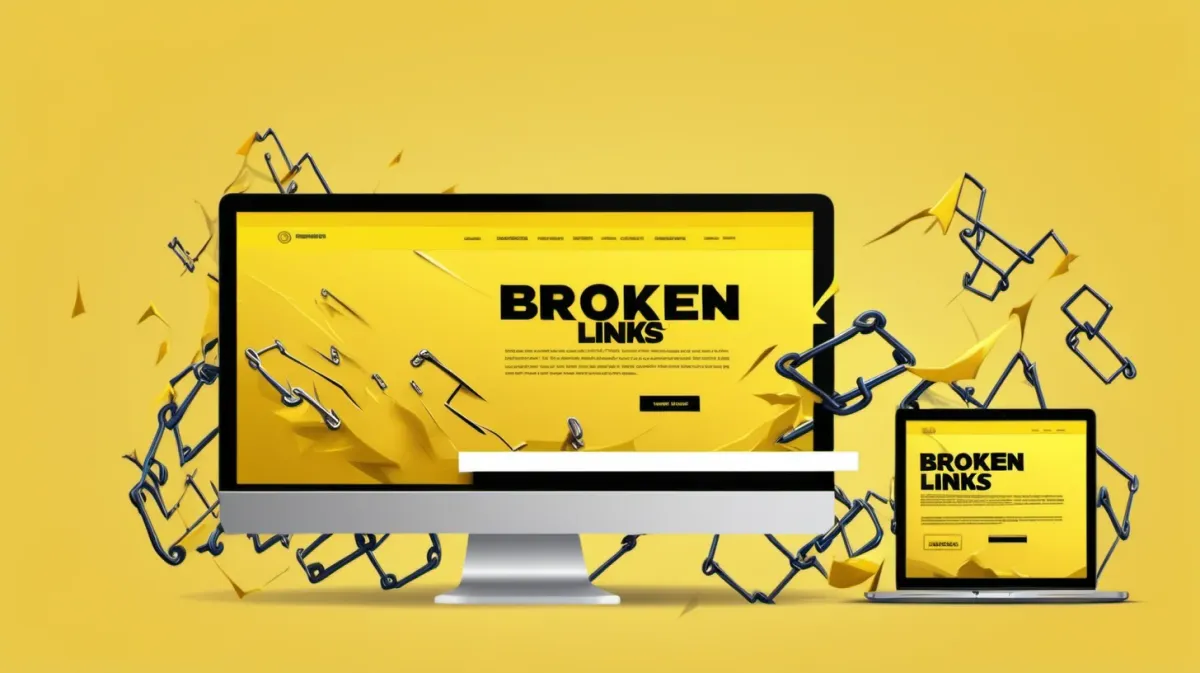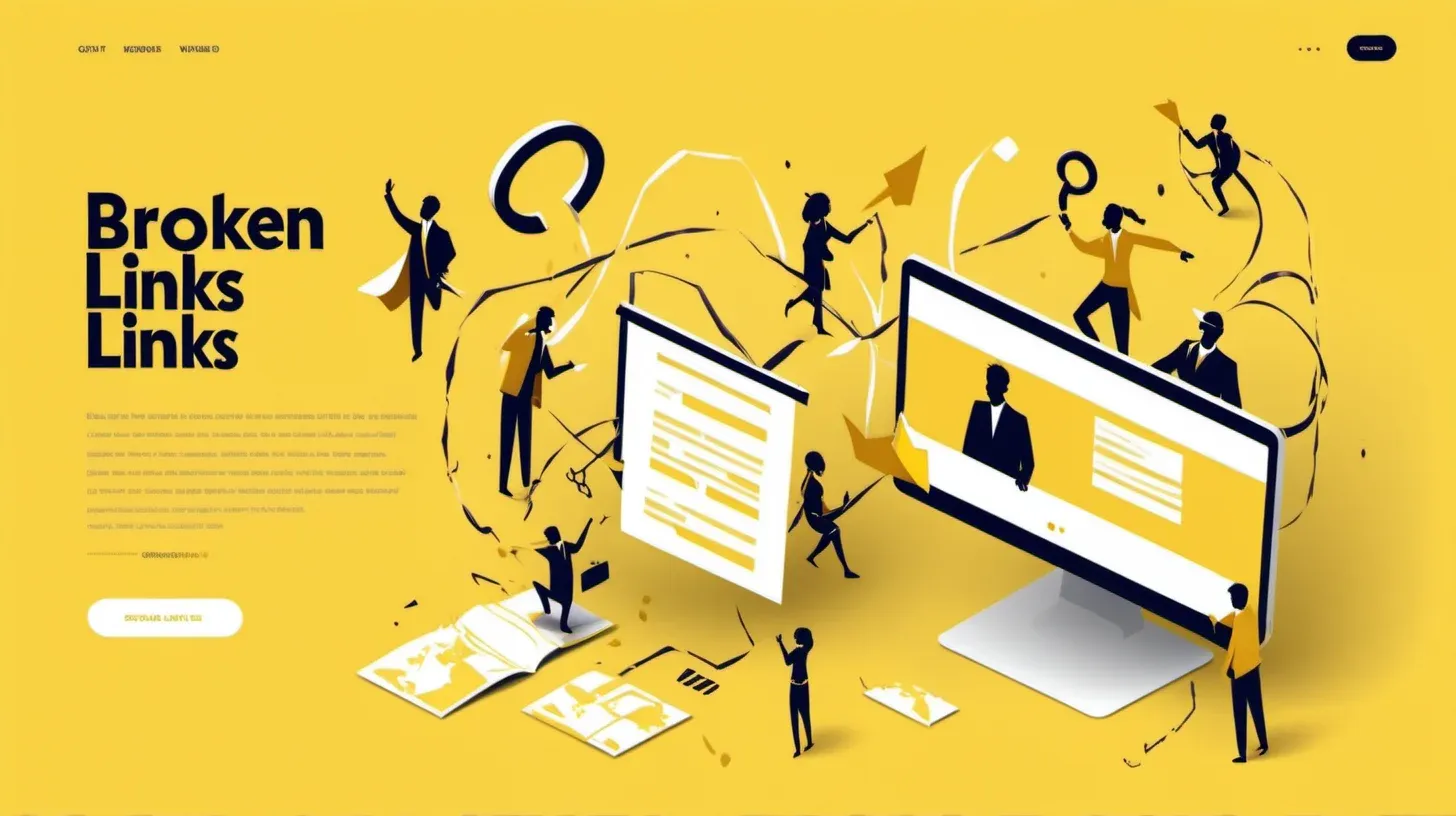Navigating The Digital Jungle: A Guide To Taming Broken Links For SEO

Websites need internal links to connect their pages. Internal links that don't work right hurt both the user experience and SEO.
For example, 43% of people who visit a site leave after clicking on a corrupt link. It shows that in our digital world practices, we must talk about how to fix broken internal links and how they can hurt your SEO.
Main findings of this article include:
- How to figure out broken internal links
- Broken link impact on SEO
- How to use tool navigation to fix broken Links strategically
Join this investigation to learn about broken internal links, how they affect SEO, and how to keep the internet strong and easy to use.
What Do You Mean By Broken Internal Links?
Internal links are hyperlinks that connect different pages within the same website. These links allow users to navigate seamlessly between pages and sections of a website.
A broken internal link refers to a link on a webpage that leads to an error page or inactive web address. This happens when the target page is moved, renamed, deleted, or temporarily unavailable. For example, an internal link pointing to www.example.com/target-page results in a 404 error because that page no longer exists on the site.
These links disrupt the user experience as they encounter error messages when clicking on such links expecting content. It also poses crawlability issues for search engine bots trying to index the pages.
The bots may hit dead ends when trying to follow broken links, leaving certain pages undiscovered. This can negatively impact the website's search engine visibility, emphasizing the importance of understanding broken link impact on SEO for maintaining a robust online presence.
How Do Broken Links Affect Search Engine Rankings?

Broken links can significantly impact search engine rankings in a variety of ways. By disrupting the user experience and website structure, broken links make it challenging for search engines to efficiently crawl, index, and rank webpages.
The main ways in which broken links adversely affect SEO include:
Negative User Experience (UX)
When users encounter broken links on a website, it leads to a frustrating and disjointed navigation experience. This results in perceptions of an outdated, neglected, or low-quality site, causing users to leave quickly. High bounce rates from poor user experience can signal issues to search engines.
Crawlability Issues
Search engine crawlers may face obstacles in fully crawling and indexing a site if they frequently run into broken links. This can limit their understanding of the site structure and content, leading to suboptimal rankings.
Link Juice And Page Authority Loss
Broken links result in a loss of link equity, or link juice, that gets passed between webpages. This dilutes the page authority and domain authority, which are important ranking signals.
Increased Bounce Rates
Since broken links disrupt navigation, users tend to leave the site quickly when encountering them. The resulting increased bounce rate is perceived negatively by search engines.
Indexing Challenges
For search engines to properly index a site, they require a logical and seamless linking structure. Broken links make it harder for bots to follow site architecture and relationships between content. This can hamper indexing and rankings.
By promptly identifying and fixing broken links, websites can significantly enhance the user experience while enabling search engine bots to better crawl, index, and assign rankings to their pages.
What Is a Broken Link Checker?

A broken link checker is an automated tool that crawls through a website to identify broken links. It scans all pages on a site to check that all internal, external, and image links are working properly. If it detects any dead or broken links, it generates a report highlighting the broken URLs.
Incorporating a reliable broken link checker tool into the regular website care routine is crucial for several reasons, including ensuring effective SEO-friendly link maintenance.
- It helps detect and fix broken links that may otherwise go unnoticed. Manually checking links can be tedious and prone to overlooking certain links on large websites.
- It scans pages that may not be crawlable by bots, ensuring that broken links on such pages are also detected.
- It continuously monitors sites and can be set up to send notifications whenever a new broken link appears. This allows for aand the quick turnaround in fixing broken links before they seriously impact SEO and user experience.
- Advanced link checkers provide additional insights like redirect chains, response codes, etc. to aid diagnosis and streamline fixing of broken links.
- It saves valuable time and effort that would otherwise be spent manually combing through every page on a site to identify broken links, emphasizing the importance of link integrity.
In short, a reliable broken link checking tool is invaluable for ongoing website maintenance and critical for protecting long-term SEO rankings and providing users with a smooth navigation experience.
How To Find Broken Links?
Providing a seamless user experience should be the top priority for any website owner. An effective way to ensure this is by regularly monitoring your site for broken links and fixing them promptly.
Here are some of the main techniques you can employ to identify broken links on your site:
Use Google Search Console
Google Search Console offers a handful of useful reports to detect broken pages and links on your site. Specifically, check the ‘Crawl Errors’ report which highlights URLs returning 404 and other errors. The ‘Internal server errors’ report also indicates broken pages.
Leverage the ‘Linked from’ reports to see all pages linking to a particular URL, which helps identify and fix broken links pointing to that page. The ‘Invalid clicks’ report flags unintended redirects happening on your site so you can troubleshoot and resolve them.
Leverage Website Crawlers
Website crawlers or spiders are automated broken link analysis and tools that crawl through your site to find broken links. They check both internal links pointing to pages within your site as well as external links leading out to other sites.
Some popular website crawling tools include Xenu, Dead Link Checker, and W3C Link Checker.
Use these crawlers to perform periodic full-site scans to uncover any broken links that may be lurking on your pages. The crawlers generate detailed reports highlighting the faulty links to be fixed.
Check Internal Links Manually
Sometimes, no automated tool can catch every single instance of broken links on your site. That's why you should complement crawler scans with manual inspection of your site's internal linking structure.
Thoroughly go through your site's pages and check that the internal links within the content lead to a valid page. Click on the links to verify they work. Also check that navigation menus, site maps, category pages etc have working internal links.
Review External Links
Just as important as checking internal links is verifying that external links on your pages direct users to a live web page. These could be links pointing to resource pages, citations, or external websites.
Try accessing a representative sample of external links on your pages to confirm they are not broken. Prioritize reviewing external links that appear frequently across pages on your site to ensure effective SEO-friendly link maintenance.
Monitor User Feedback
Your own manual checks will likely miss many broken links detectable only by actual users visiting those pages. That's why monitoring user feedback and complaints is crucial.
Closely track user comments mentioning encountering dead pages or links. Social media complaints can also clue you into broken links. Analyze site search queries leading to zero results, indicating potential broken links.
How To Fix Broken Links?

Fixing broken links promptly is crucial to provide a seamless user experience and uphold your website's SEO rankings. Here are some key steps on how to fix broken links effectively:
Identify Broken Links
The first step is to clearly identify all broken links using the techniques discussed earlier, including manual checks, crawlers, and broken link detection tools like Google Search Console. Maintain a list of all broken links for easy tracking.
Update URLs
For links pointing to pages that have been moved or restructured on your site, update the URLs accordingly. Make sure to update both internal links pointing to these pages as well as backlinks from external sites.
Implement 301 Redirects
If a page has moved permanently, use 301 redirects to pass link equity and ranking power to the new URL. 301 redirects also help avoid confusion for visitors.
Remove Or Replace
Eliminate any links leading to irrelevant or inaccessible content. If the content has moved, redirect the link. If not, replace it with a relevant link, incorporating a thorough broken link analysis to enhance the overall user experience.
Use Relative URLs
Using relative URLs instead of hard-coded links prevents future broken links if your site's domain name changes.
Custom 404 Page
Create and implement a customized 404 error page so users can easily navigate back to relevant content when they land on a broken link.
Link Hygiene Practices
Follow link hygiene best practices moving forward, like using descriptive anchor text, consolidating old links, and regularly checking for broken links.
Promptly fixing broken links improves site crawlability, retains link equity, provides a seamless UX, and upholds your search engine rankings.
FAQs About Broken Links
How Often Should I Check For Broken Links On My Website?
Regularly audit your website for broken links, ideally on a quarterly basis or whenever there are significant updates or changes to your site's content. This proactive approach helps maintain a seamless user experience.
Can Broken Internal Links Affect SEO?
Yes, broken internal links can harm SEO. They create navigation issues for both users and search engine crawlers, leading to incomplete indexing and potential loss of link equity.
Do Broken Links Impact Website Credibility?
Yes, broken links can diminish your website's credibility. Users may perceive a site with numerous broken links as untrustworthy and outdated. Maintaining a website free of broken links reflects positively on your brand's professionalism and attention to detail.
